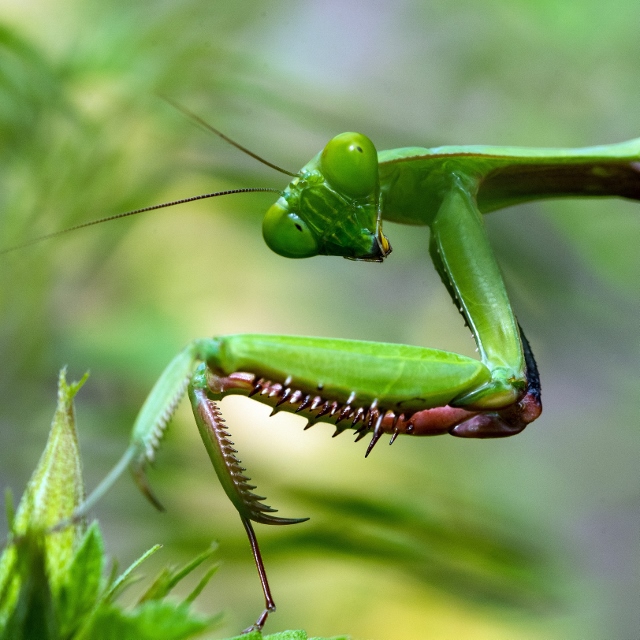
Beneficial Bugs
We may view bugs as a nuisance because they are eating our plants or intruding in and around our homes. The Spotted Wing Drosophila or Japanese Beetle are two examples of pesky bugs that can cause damage to our beloved plants. I could go on and on about bugs that cause us major gardening headaches and heartache at times.
Many of us know about the beneficial pollinators like bees or the pest killing dragonflies, butterflies, and spiders but let’s look at some bugs you may not have heard that can help us in our fight against nasty pests. These bugs aren’t usually a quick fix nor are they a complete eradication pest control, which in most cases, isn’t needed. If we look at the positive of beneficial bugs, we can help balance the ecosystem without using pesticides or comprising your crop with harmful chemicals.
Diversity of plants in your yard is the most important aspect of supporting all beneficial insect life so here is a limited list of plants that are proven to attract them.
Plants that attract beneficial insects:
Sunflower: Ladybugs, Syrphid Flies, Parasitic Wasps, Spined Soldier Bugs, Minute Pirate Bugs
Yarrow: Honey bees, Ladybugs, Hover Flies, Parasitic Wasps, Lacewing
Dill: Ladybugs, Lacewing, Hover Flies, Parasitic Wasps
Clover: Tachinid Flies, Parasitic Wasps, , Ground Beetles, Big-Eyed Bugs, Hover Flies, Ladybugs, Honey Bees
Fennel: Parasitic Wasps, Hover Flies, Tachinid Flies, Damsel Bugs, Ladybugs, Lacewing, Big-Eyed Bugs
Cosmos: Lacewing, Hover Flies, Parasitic Wasps, Big-Eyed Bugs
Black-eyed Susan: Parasitic Wasps, Honey Bees, Hover Flies
Here are a couple beneficial bugs you can add to help mitigate aphid, mosquitoes, mites, and many other soft-bodied insect.
Praying Mantis

Praying mantis
The Praying mantis would be an insect you would need to introduce and is a predator of many insects, mites, and eggs. They have a really healthy appetite so be careful if you use other beneficial insects or worried about native bugs being eaten such as the Ladybug which we will get to in a moment. When they are young, the praying mantis will eat mosquitoes, aphids, leafhoppers, caterpillars and other soft-bodied insects. As adults, they will eat beetles, grasshoppers, crickets, and other pests in your garden! If you are worried about introducing an insect not native to Minnesota, you need not worry. The praying mantis will not survive the winter here. There are multiple sites that you can buy the praying mantis egg cases with instructions on how many you would need and the best time to use them.
Ladybug A.k.a Lady Beetles

Ladybugs
The native ladybugs are great predators to aphids and other soft bodied pests, mites, and eggs. You may not see native Ladybug anymore compared to the Asian Lady Beetle that was introduced in the South. Their purpose was to eat aphids from crops but made their way up North. You might not be as familiar with their larva either so check out the pictures here. You can buy Ladybugs to introduce to your garden but you have to make sure they stay there to eat and hopefully lay eggs! Many sites state to put them in the garden at night since they won’t fly at night and water around the area well!
